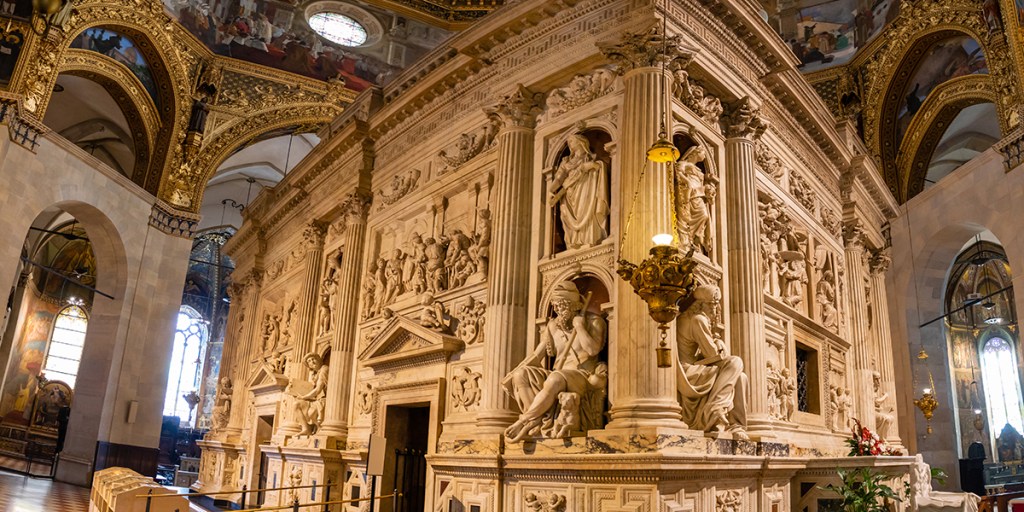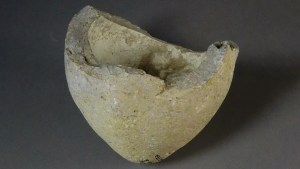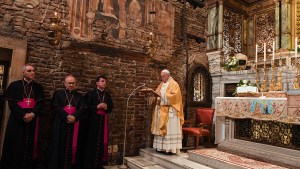In Christianity (and Islam), St. Anne is known as the mother of Mary and, therefore, as Jesus’ grandmother. In truth, there is very little known about her. To begin with, she and her husband, St. Joachim, are not mentioned in the canonical gospels. Their story is told in a document known as the Gospel of James, one of the many apocryphal Gospels.
The Gospel of James is not to be read for its factual accuracy (it is full of fantastic, quasi-mythical passages), and it is not considered to be the inspired Word of God – which is why it is not included in the Bible. Yet since this text is the first one to mention Anne and Joachim as Mary’s parents, the Gospel of James is thus credited with starting a tradition honoring the couple who raised Mary in a way that made the Incarnation possible. In short, if the names and events told in the Gospel of James regarding St. Anne and St. Joachim are historical or not is, in the end, irrelevant.
St. Anne is the patron saint of, obviously enough, grandmothers. She is also the patron saint of unmarried women, housewives, women in labor, childless people, equestrians, lacemakers, miners, the poor, seamstresses and, according to some sources, those who are changing residences.
The story that gave rise to this relatively unknown patronage has a few variations, depending on who you ask.
The Holy House of Loreto
The Holy House of Loreto cosists of three walls of stacked stones. It is safeguarded beneath an ornate Renaissance-era basilica in Loreto, Italy. It is believed that Mary grew up in this house and that the Annunciation took place in it. But shouldn’t Mary’s house be in Galilee?
There is a Basilica in Nazareth, the Basilica of the Annunciation, built over a grotto where tradition claims Mary grew up and was visited by the Archangel Gabriel. It is the largest church in the Middle East. The remnants of four earlier churches within it (a 3rd-century synagogal basilica, a 5th-century Byzantine basilica, a crusader church from the 12th century, and another one built by the Franciscans in the 18th century) bear witness to the ancient belief that this was the site of Mary’s house and the Annunciation.

For many centuries, tradition held that angels miraculously carried the Holy House from Nazareth to Loreto. Throughout the Italian basilica are numerous artistic depictions of angels flying over the seas with the house. No wonder, then, that St. Anne is the patroness of relocations.
Modern research suggests that the Holy House, like many relics from the Holy Land, may have been transported by ship. In the early 1900s, a papal archivist discovered a record detailing items that were brought to Italy from the Holy Land during the Crusades. He discovered that a Greek merchant with the surname Angelos paid crusaders to move the house to Italy. His name might have led to the tradition of the angels bringing the house, brick by brick, to Italy.
But in any case, if you have a move on the horizon, you know you can count on help from St. Anne.




